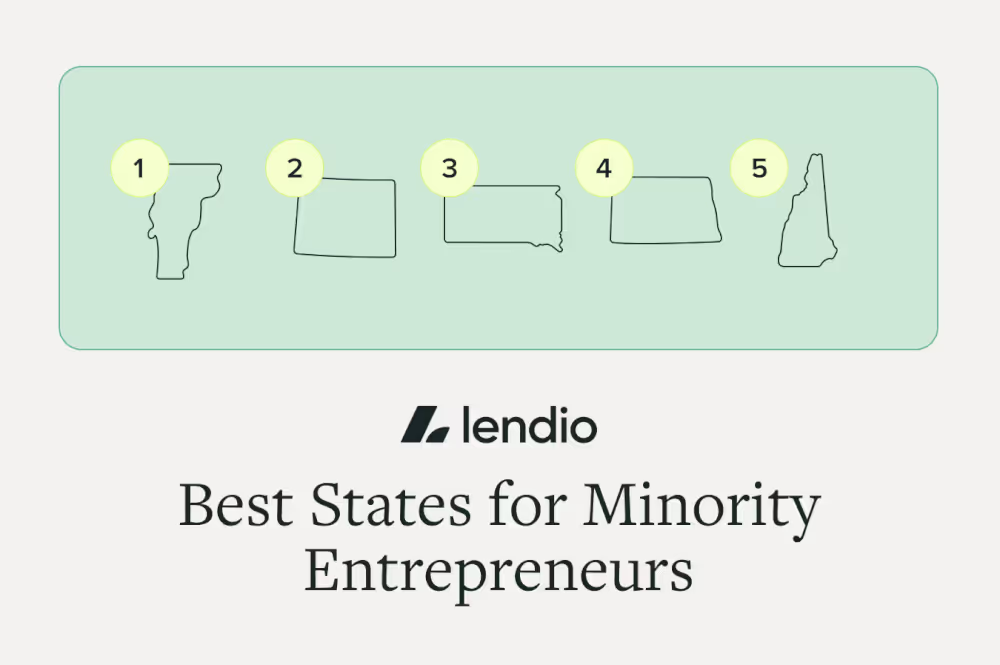It’s time to close the funding gap and open more women-owned small businesses.
As of 2020, there were more than 13 million women-owned businesses (including sole proprietorships and employer firms). That sounds like a lot, right?
But that number actually hides a trillion-dollar missed opportunity. According to Morgan Stanley, if women-owned (and minority-owned) businesses were funded at the same rate as white male-owned businesses, gross receipts could increase by $4.4 trillion.
Women can start any small business they want—including full-time or side businesses, franchises, and home-based businesses. Let’s take a look at services that are in high demand for female entrepreneurs in 2024.
Growth industries for 2024.
To be a successful small business, you need customers. What’s the easiest way to get customers? Give them what they want. With that in mind, here are some industries that are poised for growth in 2024 and beyond.
Automotive batteries
As the production of and demand for electric vehicles has increased it has led to a shortage of automotive batteries. McKinsey predicts demand for EV batteries will grow by 30% by 2030. This opens up opportunities for new businesses to present new solutions for boosting the supply chain from access to raw materials to factory construction and design.
Home healthcare services
We’ve entered what many demographers are calling the “gray tsunami:” aging baby boomers. “As boomers age through their 60s, 70s, 80s and increasingly beyond, the ‘big bulge’ of the boomer generation will contribute to the overall aging of the US population in coming decades,” said Stella Ogunwole, a demographic statistician with the US Census Bureau. This aging population represents new workforce needs, as aging-in-place services (vs. nursing homes and skilled living facilities) become more desirable.
Mental health
A national shortage of mental health specialists and an ever-growing need for their services represent a widening gap that bears great possibilities for small businesses that can meet that need. “On average, countries spend only 2% of their health budget on mental health initiatives, so it’s going to take entrepreneurs to step up to the plate to fill the void.” This requires some specialization, but if you’re eligible to provide mental health services—or brainstorm business ideas with those who can—the opportunity is yours to seize.
Education and E-Learning
The e-learning industry is projected to become a $375-billion industry by 2026. And there’s no slowdown ahead, with multiple avenues for growth: “E-learning won’t be the only potential trend in the education market. Tutoring options to help school kids ‘catch up’ on lost learning will be needed,” too. And businesses utilize their own corporate internal e-learning platforms to educate employees and train them on new skills.
Health and wellness
Wellness continues to be a growing priority among consumers. A McKinsey survey found Black consumers have the greatest need for wellness products and services that meet their needs. The boutique fitness industry is also projected to grow at a compound annual growth rate (CAGR) of 7.63%. With a growing demand for personalized health and fitness products and services, women can narrow down their target market for their app, product, or fitness space to find a profitable business idea.
Pet care
Pet owners have started taking the health of their pets more and more seriously. The global pet supplement market, for example, is expected to grow at a CAGR of 5.9% from 2024 to 2030. Whether you want to focus on personalized nutrition or smart pet technology, animal lovers are eager to explore new products for their furry friends.
E-commerce
We’re shopping online, and for a wider range of products, than ever before. The International Trade Administration estimates the B2B e-commerce market will be valued at $36 trillion by 2026. E-commerce offers numerous growth opportunities for small businesses, whether you’re a B2B shipping company that can help deliver the goods or a boutique with unique items to sell.
Physician or nurse practitioner
The United States is in desperate need of more doctors. It’s projected we could see a shortage of between 37,800 and 124,000 physicians by 2034. If you’re considering a return to school, starting a career in family medicine or pediatrics would open the door to your own private practice.
Small business ideas for women who want to work from home.
Are you a woman who’s looking to start a business from home? You’re far from alone: in US workplaces, according to Forbes’s coverage of a LinkedIn survey, women are 26% more likely than men to apply to work remotely. This desire easily translates to those looking to start their own businesses as well.
Here are some growth-forward options for your own female-owned small business—and they’re easily startable from your own home.
Consulting services for nonprofits
Nonprofits can be excellent clients for a home-based consulting service. Nonprofits have the same backend office processes as any other business—including HR, legal, administrative, and technology—but they typically have less support staff than a for-profit business. Evaluate your skill set (bonus points if it includes fundraising or grant writing) to find what you can market to a nonprofit.
Cybersecurity consulting
If you have a background in cybersecurity, the time to start your own consulting business is now. According to ZipRecruiter, “The average annual cybersecurity consultant salary in the United States is more than $110,000.” Cybersecurity consulting also allows you to participate in an important fight against cybercrime, which is expected to skyrocket in the next four years reaching a global cost of $13.82 trillion by 2028. If you need to brush up on your cybersecurity credentials, never fear: the small-business insurance marketplace Insureon has you covered with a list of required credentials.
E-learning
The e-learning boom is a huge opportunity for female entrepreneurs skilled in creating content, developing mobile apps, or administering backend learning management systems—all easy roles to fill from home. If you aren’t tech-savvy, though, no worries: the education market holds diverse opportunities for engineers and non-coders alike. Children need catch-up tutoring to counter remote learning gaps, and adult workers require upskilling to prepare for new roles post-pandemic.
Fintech franchise
The world of fintech offers a vast array of at-home female-owned business options: whether you’re interested in investment management, mobile banking, lending, crowdfunding platforms, or any other fintech niches (depending on your past experience), this sector could be perfect for you.
Fitness coaching
Once a more specialized offering, at-home fitness coaching—whether remotely over social media/Zoom or drop-in at-home classes—has become more common since the pandemic drove many trainers online. These days, interested customers can do yoga in their living room or take CrossFit classes in their garages. If you can coach them—either in-person, remotely, or through pre-made video options on YouTube or other platforms—they’re eager to find your woman-owned fitness business.
Food-related services
When you hear the phrase “home-based food business,” you might immediately think of making birthday cakes. That’s viable, for sure—but so are meal kits and meal delivery options, as the aging population and remote workers alike seek home-cooked meals that won’t require them to grocery shop or clean excess pots and pans. Before you dive in, though, make sure to check state and local ordinances around operating food-based businesses from home.
Human resource (HR) services.
If you’ve previously worked in HR, have you considered growing those skills into a home business? With the right credentials, working as an HR consultant is in high demand and offers tremendous flexibility. Daniel Borz of SHRM has an additional idea: “Instead of becoming a[n HR] generalist, working with clients across a wide range of industries, consider branding yourself as a specialist in a particular field or service.” This will help you thrive with a focused mission and to differentiate yourself from other work-from-home consultants.
Online store
Online shopping is here to stay, so you could set up an online store as your home-based business. An Etsy shop or Screen Print Direct, may be the perfect option if your products fit the art or creative categories (e.g., jewelry or woodworking items). You could also offer B2B solutions, allowing you to tap into a massive growth sector. According to Bigcommerce, “In 2020, the global B2B e-commerce market was valued at $14.9 trillion—over 5 times that of the B2C market.”
Virtual assistant
The rise in solopreneurs and small businesses means that more folks than ever need help managing their calendars, meetings, and more—but they lack the staff that a larger company might provide. This presents the perfect opportunity for virtual assistants, who can manage these tasks from home. As Gathering Dreams puts it: “As a virtual assistant, you get to choose who you work for and what tasks you take on. You’ll be able to manage your own schedule and work from anywhere.”
Affiliate marketing
Already got a sizable website traffic or SEO savvy? You’re practically already set up to work as an affiliate marketer—especially if your website represents a particular niche. Shouting out a brand or product that you believe in to convert your followers to that brand’s customers is valuable to all parties involved, and it can net you solid income. The best part? Once the content is made, your earnings are largely passive income, allowing you to focus on the next task ahead.
Freelance writing
Between writing for SEO, editing a company’s social media content, or providing grant writing services to nonprofits, there are numerous great options for putting your writing and editing skills to work as a woman-owned small business—and since all you’ll need is a computer and a WiFi connection, it’s a perfect WFH gig. Credentials for some of these skills, like SEO writing, can also be earned for free from reputable sites like HubSpot or Google.
Social media consulting
If you have experience running social for a brand or business—transitioning into a social-media consulting career makes the perfect at-home small business. According to Sprout Social, “Social media consultants are individuals or agencies who work with clients to improve upon, optimize and grow their social media presence.” Some specialize in one area for multiple clients, like restaurants, whereas others might manage a single brand’s entire presence across platforms.
Graphic designer
If you’re a female entrepreneur with a knack for visual creativity, a graphic design business might be a great fit for you. From logo design to advertising illustrations to infographics to typeface design and beyond, working from home as a graphic designer has relatively low startup costs. Bonus: you can partner with other women-owned small businesses to kickstart the visual elements of their businesses!
Why are home-based small businesses ideal for women?
You can save money with a home-based business by eliminating offsite office expenses and (possibly) claiming tax deductions for part of your home. Eliminate your commute, and you have extra time in your day.
Home-based businesses also confer tremendous flexibility, especially for women who also manage complex domestic situations—whether that’s childcare, elder care, or more.
Side business ideas for women.
A side business can be a great way to try out your small woman-owned business idea. You can also use it to supplement your day job—to step into full-time business ownership, earn extra income, or diversify your income.
Side business ideas for women include:
Educational services
- Tutoring
- Music lessons
- Test preparation
Home care services
- Caretaker services
- Cleaning services
- Lawn care services
- Home repair services
- Technology assistance services
- Interior design
- Child care services
- Transportation service
Investments
- Franchise
- Real estate
- Airbnb
- Refurbishing/reselling
Digital businesses and services
- Virtual assistant
- Blogging
- Freelance writing
- Freelance graphic design
- Freelance web/mobile app developer
- ETSY shop
Why could these side businesses be successful for women?
A side business or part-time business that targets industries with big markets helps set you up for success.
For example, your next customer could be aging in place to avoid the cost of long-term care facilities. The so-called longevity industry is projected to be a $13.5-trillion industry by 2032. By 2034, the Census Bureau predicts that an estimated 77 million people will be 65 years of age or older. That’s a lot of elderly people who may need help with meals, household chores, home healthcare, transportation, and personal assistance.
Cleaning services aren’t glamorous, but they can be profitable. Verified Market Research predicts the global market will be worth $101.98 Billion by 2030.
In addition to traditional real estate or franchise investments, women can consider purchasing a Airbnb investment property in a high-demand area. If you have woodworking skills, you could refurbish antique furniture or use your sewing ability to bring new life to quality vintage clothing.
How to start a woman-owned business.
Starting a women-owned business follows the same principles as starting any business.
Broad steps to starting your woman-owned business include:
- Write your business plan.
- Secure your financing.
- Plan your pricing strategy.
- Launch your product or service.
Any of the ideas listed above could be your full-time small business, side hustle, or home-based business. Focusing on growth industries is helpful, as the potential for future success is greater. Ultimately, identifying your unique abilities and passions and using those to launch your own successful woman-owned small business will serve you best of all.






































.png)

















